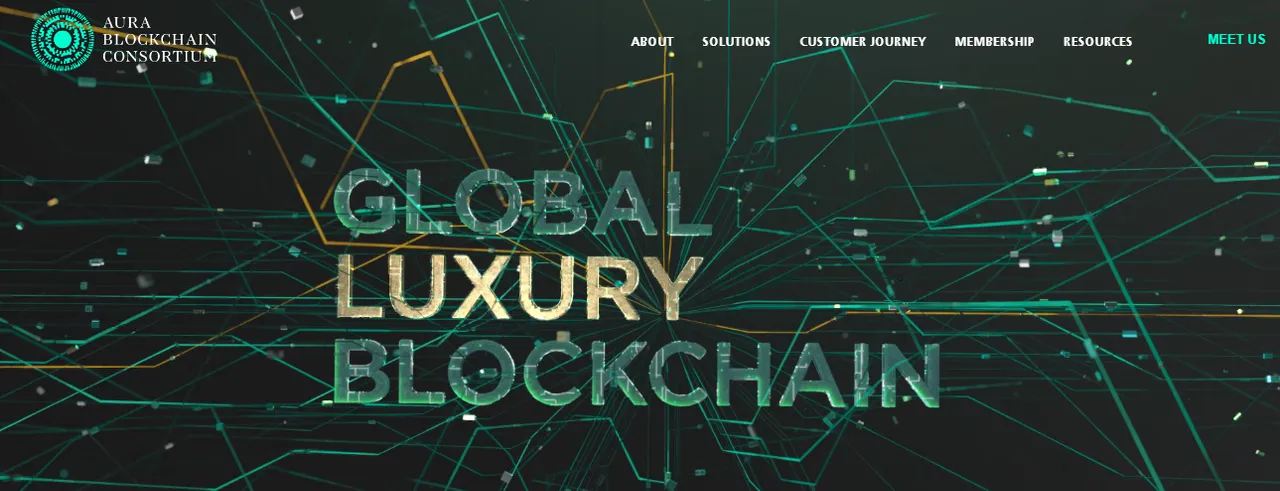
The public blockchains are the one that allow to have a web3 experience with true ownership, censorship resistance, interaction between platforms, an organically grown community, and so on. However, this is not what some companies need when they are trying to register transactions that carry sensitive information that should not be available to the public.
That is when private blockchains come in handy, with some of the benefits of a public blockchain but keeping it only to the intended eyes. To built the, Ethereum has tools that allow using their protocol as the foundation, and even connect to the Mainnet.

How to create a private blockchain using Ethereum
There are a few ways to create a Private Blockchain. The one that jumped the most in the results was using Geth (Go Ethereum). "Geth is an Ethereum execution client meaning it handles transactions, deployment and execution of smart contracts and contains an embedded computer known as the Ethereum Virtual Machine" See more info in the Geth website. This clients allows both to create a private network or, using along with a consensus client, to run a Ethereum node.
The steps to built are explained on their website, but it all starts downloading the client and creating the Genesis Block. Then the first node of the blockchain and the second. To call it a blockchain you need to have at lest the two first nodes and star mining and see data updated in both nodes. These two are to be use to create the first account (s) and start testing the commands to see if both are indeed connected and updating the information as they should. After that more nodes can be added.


Blockchain as a Service (BaaS)
But building on your own is not the only way to have the benefits of a private blockchain. There is a kind of new business of Blockchain as a Service, where different companies have developed the infrastructure to help others run their blockchain based apps. This services are in charge of maintaining the network secure and running.
There are several examples.
Amazon Managed Blockchain Which uses both Hyperledger fabric and Ethereum. This is done primarily to create a hybrid blockchain, Hyperledger fabric allows the modular construction, which helps with the creation of solutions suitable for companies looking for flexibility and privacy. Ethereum on the other hand provides the public side, for broadcasting transactions. The social aspects are managed on Ethereum while the operational on Hyperledger Fabric.
Chainstack is a multichain solution that allows you to connect with several blockchains in just one click. It gives access to building in a public network or a enterprise network. Includes not just Ethereum but, Polygon, BNB Smart Chain, Avalanche, Arbitrum, Solana, and more.
Microsoft Azure, developed in a partnership between Microsoft and ConsenSys aims to give their clients a cloud based Blockchain where they can develop in very easy steps. They use Ethereum and not Bitcoin because Ethereum is more flexible on the app creation, provides better scalability as well. And since the merge, is easier to maintain, using now Proof of Stake rather than Proof of Work.
These are just three examples, there are other sites that can be used on their own but also are used combined depending on what the company needs. Other examples are Consensys, Hyperledger, Kaleido.io, IMB Blockchain and more. And there will be more developments of platforms like this, because even tho public blockchains have a lot of benefits, companies have information that can't be public and don't trust a system when they are not in total control. Of course, the main information comes from Ethereum Mainnet for enterprise and Private Ethereum for enterprise.

Proof of Authority and how it allows private blockchain creation
I thinks almost all protocols can have a application on private blockchains, but the one that makes more sense to me is the Ethereum Proof of Authority Protocol. This Protocol allows for the creation of permissioned networks, where the participants need to be authorized before they can access and be part of the consensus. This is something that differs a lot from public blockchains, since being accesible for everyone is an aspect of them that doesn't correspond to the need oh enterprises that might be looking to make their internal process more efficient but wouldn't like to make all the information visible to the public, since there might be important data that can cause security problems, like live locations, personal information of clients or members of the company, internal costs, and so on. That information could even be accessible for just some member with the specific keys.
The Proof Of Authority enable access just to the people authorized, so, even if the private blockchain uses the Ethereum technology, it is isolated from the Mainnet and only can be accessed by the authorized nodes and for users with the right keys.
The Proof of Authority grants permissions to those authorized nodes, making it less have a lower resources requirements that the Proof of Work Protocol.

Advantages
The use of private blockchains have several advantages. One being privacy and confidentiality. There is information that has to be kept out of the eyes of the public for economic or security reasons. The private blockchain allows to manage that sensible data.
With a private blockchain you also have more control on the governance. for companies or even a group of companies, this allows to set the rules that will be follows by all the participants, making sure everything can work only as agreed at the creation of the blockchain, and any changes have to have the approval of all member to go through.
Since a private blockchain doesn't have the problem of network congestion, being there fewer users, it can make the transaction go faster than most public blockchains.
The transaction costs can be lower than most public blockchains, being set and managed by the network participants that have a granted authority, although Hive has a better system in this instance. The low fees are very beneficial for organizations that manage a big volume of transactions.
Private blockchains allow businesses to create their own smart contracts. This can reduce the risk of errors or disputes.
Allows to control that there are not illegal activities being performed on the blockchain or with the resources.

Disadvantages
Since the nodes are less that the ones on a public blockchain, they are more vulnerable to attacks, since few nodes need to be compromised to take control of the network or make fraudulent transactions.
They are not affordable, they have a high cost on infrastructure and maintenance that comes from the same company, so a big corporation might see them as a worth expense but for small business it can be an obstacle.

Use cases
There has been some news around the use cases, some are just plans, others are not exactly the kind of use we want, for example when banks join the public blockchains, I do not want to see more tokens backed by banks, that is just fiat but digital. One of the news was European Investment Bank Issues $121M Digital Notes Using Ethereum.
Another use case is the Drug Supply Chain Security Act (DSCSA) which aims to trace "certain prescriptions of drugs" to detect any dangerous events, remove them when dangerous, and secure that they follow all the safety requirements throughout all the supply chain. This was created by ConsenSys partnering with the pharmaceutical company, Glaxo Smith Kline (GSK) and other firms.
A very interesting use is to implement Traceability Smart Contracts to achieve a Proof of Authenticity. This is what the project AURA does. It was developed by ConsenSys and Microsoft, it is also made from and for Luxury brands, and any of them can be part. It uses a contortion model and any luxury brand can become part. This helps to follow all parts of the creation of a luxury item from the raw material all the way even to the second hand market.
The private blockchains can also leverage the Ethereum Blockchain to ensure the integrity of the data. This can be useful for cases that might carry legal repercussions, like the Hala’s Sentry Early Warning System, which has successfully alerted of airstrikes and reduced their lethality. The only problem was, that being a private enterprise it compromised the integrity of the information when used on court for any reason. Here is where ConsenSys enter, and the Ethereum Blockchain. They created a solution where Hala could remove itself from the main process and Sentry sent the information to the Ethereum Mainnet, following all the rules of the block creation, getting a hash number, a timestamp, the report also get a geotag, and everything gets registered on the Ethereum Blockchain forever. Making it immutable and getting back then trust on the information since it will stay as it was registered, can not be manipulated afterwards.

And there are so many other use cases for private and semi-private blockchains that use Ethereum as the foundation. A lot of those are well, private, so besides the news about their implementation, it is hard to find information about how their system work. Several of them are still testing, but the benefits are being seen so soon we will get more use cases properly documented online.

Espero les haya gustado, hasta la próxima publicación
Hope you liked it, until the next time

Designed by @jes.seth
 |  |  |  |
|---|
Designed by @pashinni
